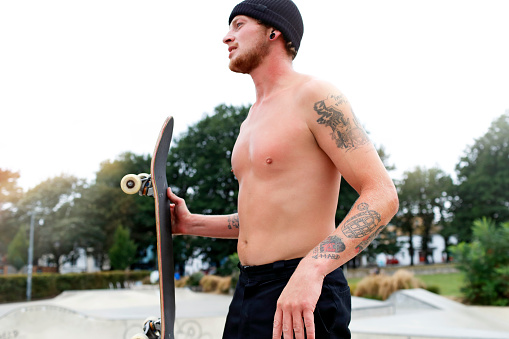26 May, 2025 | Admin | No Comments
Men and women are getting skin cancer on different parts of their bodies


Men and women are developing skin cancer on different parts of their bodies — and our clothing (or lack of it) is to blame.
Blokes across the country might be tempted to ditch their tops at the first sign of sunshine, but 40% of melanomas in men are diagnosed on the torso, according to the latest data, equivalent to around 3,700 cases every year.
In women, the most common location is the lower limbs (from the hips to the feet), equating to around 3,200 cases every year (35% of all cases). The reason? Our love of skirts and shorts, without applying adequate sun cream.
The findings, from Cancer Research UK, come alongside projections that melanoma skin cancer will rise again this year to 21,300 cases across the UK – the highest on record.
Some 87% of melanoma cases – around 17,100 in the UK each year – are caused by over-exposure to ultraviolet (UV) radiation, which comes from the sun and using sunbeds.
The analysis looked at data from 2018 to 2021, and found the second most common place for men to develop skin cancer is head and neck (24%), arms and shoulders (20%), and lower limbs, including hips (13%).
For women, arms and shoulders come in second, accounting for 27% of cases, while the torso was 22% and head and neck 13%.

Alongside clothing, surface area could also be playing a role, because men’s torsos are typically bigger than women’s, while women’s legs take up a larger proportion of their body surface area.
Since the early 1990s, melanoma skin cancer incidence rates have increased by two-and-a-half times in the UK. Rates in women have around doubled, while they have tripled in men. By 2040, there could be around 26,500 new cases every year.
Signs of Skin Cancer
Common symptoms of skin cancer include a sore or area of skin that:
- Doesn’t heal within 4 weeks
- Looks unusual
- Hurts, is itchy, bleeds, crusts or scabs for more than four weeks
Keep an eye out for changes in moles, ulcers and freckles, and report new lumps or red patches of skin to your doctor.
To view this video please enable JavaScript, and consider upgrading to a web
browser that
supports HTML5
video
The main treatment for skin cancer is surgery and the good news is, it’s unusually minor with a high survival rate. But like all cancers, early detection is key. More invasive treatments including radiotherapy and chemotherapy might be needed depending on the type of cancer and if it has spread.
How to reduce your risk of skin cancer
‘Getting sunburnt just once every couple of years can triple your risk of melanoma skin cancer, compared to never being burnt’, says Fiona Osgun, head of health information at Cancer Research UK.
To reduce your risk, you need to be sun safe all year round – not just on holiday or the occasional heatwave.
‘UV rays can be strong enough to cause skin damage between mid-March and mid-October in the UK, even when it’s cloudy or cool,’ Fiona adds.
‘Try to stick to the shade between 11am and 3pm when the sun is strongest, wear clothes that help cover up your skin, with a hat and sunglasses, and use a sunscreen with at least SPF 30 and 4 or 5 stars.
‘The key is to apply it generously – and remember to top it up regularly, especially if you’re sweating or in water.’
Write Reviews
Leave a Comment
No Comments & Reviews